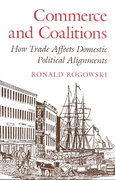Question
Problem 1. Can you help me answer these economic questions. Duopoly equilibrium in discrete increments. Consider a variation of the Bertrand model of competition, which
Problem 1.
Can you help me answer these economic questions.
Duopoly equilibrium in discrete increments. Consider a variation of the Bertrand model of competition, which we discussed in class, with two firms. The difference between this model and the one in 10 is that prices are a discrete variable rather than a continuous variable.. Prices vary in multiples of 4 cent. Firms can charge prices of 0, .01, .02, .03,... etc. The profits of firm i are i(pi, pj ) = (pi ci) D (pi) if pi < pj (pi ci) D (pi) /2 if pi = pj . 0 if pi > pj . The demand function D (p) is strictly decreasing in p, that is, D0 (p) < 0. Assume first that both firms have the same marginal cost c1 = c2 = c, and that the marginal cost c is a multiple of 4 cent. (The firm can charge c .01, c, c + .01, c + .02, etc.)
1.Write down the definition of Nash Equilibrium as it applies to this game, using pi as player i's strategy and i(pi, pj ) as the function that player 1 optimizes. Provide both the formal and intuitive definitions. Do not substitute in the expression for i. (7 points)
2. Show that p 1 = p 2 = c (that is, marginal cost pricing) is a Nash Equilibrium. (5 points)
3. This is not the only Nash Equilibrium, as it is in the case of continuous pricing. Locate a second Nash Equilibrium. (You must establish that it is a Nash Equilibrium) [Hint: This setup has a peculiar feature in that the firm can only charge prices in multiples of 4 cents.] (eight points)
4. (Harder, and long) Characterize all the (pure strategy) Nash Equilibria of the game. Show that there are no other Nash Equilibria. (18 points) 5. Now consider the case of two firms with different marginal costs, both multiples of 1 cent. Firm 1 has marginal cost c1, with c1 < c2, the marginal cost of firm 2. For simplicity, assume c2 c1 > .01, that is, the difference in marginal costs is more than one cent. Is p 1 = c2 .01, p 2 = c2 an equilibrium? Explain intuitively as well. (8 points).
5. Provide tables/diagrams for these questions. Show the exact solution. Urgent. Thanks../
Step by Step Solution
There are 3 Steps involved in it
Step: 1

Get Instant Access to Expert-Tailored Solutions
See step-by-step solutions with expert insights and AI powered tools for academic success
Step: 2

Step: 3

Ace Your Homework with AI
Get the answers you need in no time with our AI-driven, step-by-step assistance
Get Started


